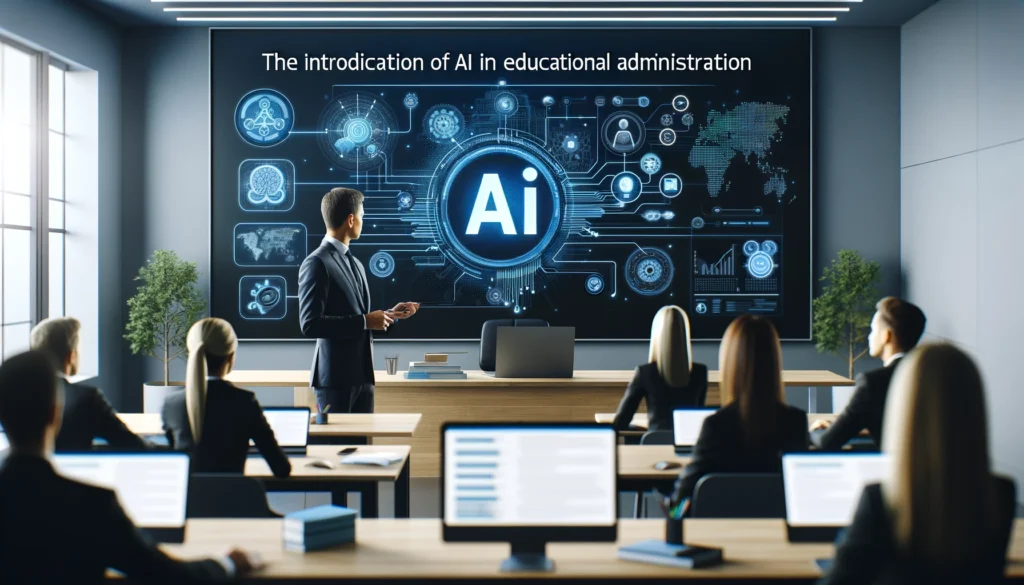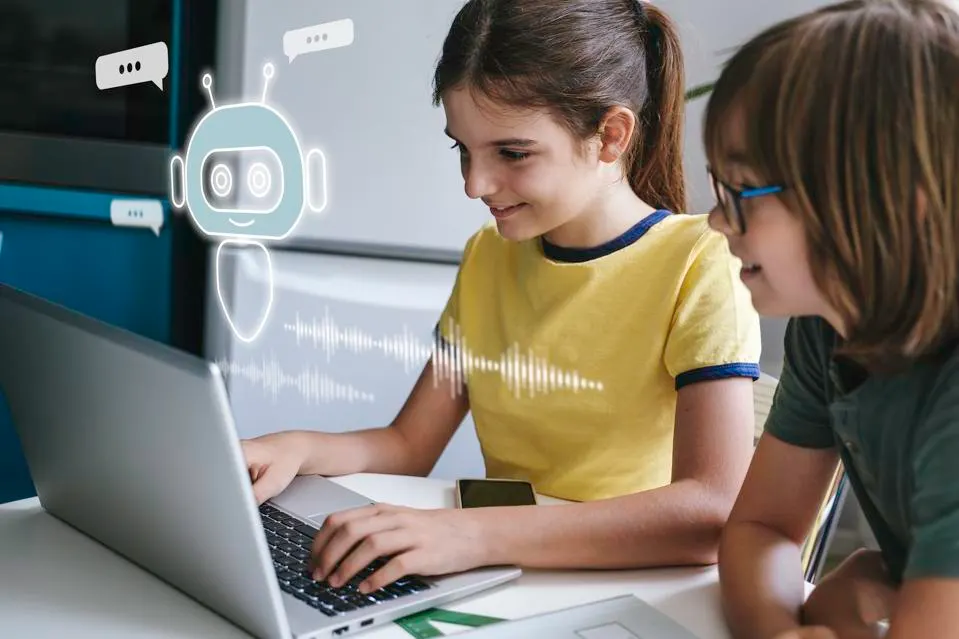In recent years, Artificial Intelligence (AI) has revolutionized numerous sectors, and education is no exception. From personalized learning experiences to automated administrative tasks, AI in education is transforming the way students learn, teachers teach, and institutions operate. With AI’s ability to analyze vast amounts of data, automate repetitive tasks, and provide real-time feedback, it is shaping the future of education in ways we never imagined.
In this article, we explore how AI is influencing education today and what the future holds for AI in learning environments.
1. Personalized Learning Through AI
One of the most significant advantages of AI in education is its ability to provide personalized learning experiences for students. Every student has their own learning style and pace, and AI-powered systems are designed to adapt to individual needs. By analyzing data on a student’s performance, AI can tailor content, recommend resources, and adjust the difficulty level to ensure optimal learning outcomes.
- Example: Platforms like Knewton and DreamBox use AI to personalize math and reading lessons for students, ensuring that each student receives the right level of challenge based on their performance.
With AI, teachers can offer more customized education that caters to the unique strengths and weaknesses of each student, allowing for a deeper understanding of the subject matter.
2. AI for Smart Content Creation
Creating educational content is a time-consuming process for teachers. With AI-powered tools, educators can automate the creation of learning materials such as quizzes, assignments, and even entire lesson plans. AI can also generate interactive content such as simulations, videos, and virtual experiments, making learning more engaging for students.
- Example: AI-driven platforms like ScribeSense can help teachers automatically grade assignments, while AI programs like Content Technologies, Inc. use natural language processing to create textbooks and study guides based on existing content.
By streamlining content creation, AI gives educators more time to focus on instruction and student engagement.
3. AI-Powered Virtual Tutors
Another way AI is revolutionizing education is through the use of AI-powered virtual tutors. These AI tutors can provide students with 24/7 access to personalized help, offering immediate feedback on assignments and answering questions in real-time. Virtual tutors can also help students who are struggling by breaking down complex concepts into manageable chunks and offering tailored explanations.
- Example: MATHia by Carnegie Learning uses AI to provide personalized tutoring in mathematics, allowing students to progress at their own pace with the support they need.
AI-powered virtual tutors help bridge learning gaps, ensuring that students receive assistance even outside of classroom hours.
4. Automated Grading and Administrative Tasks

AI is making administrative tasks more efficient by automating processes such as grading, attendance, and even report generation. Automated grading systems use AI algorithms to assess students’ work quickly and accurately, freeing up teachers to spend more time on lesson planning and student interaction.
- Example: Gradescope, an AI-powered grading platform, automates grading for multiple-choice tests, short answers, and even programming assignments, reducing the burden on teachers.
By automating repetitive administrative tasks, AI is allowing educators to focus on fostering creativity, collaboration, and critical thinking in their students.
5. Enhancing Teacher Training and Support
AI is also playing a key role in teacher professional development. AI-driven platforms are offering personalized training programs to help educators improve their teaching methods, classroom management skills, and subject knowledge. These platforms analyze data on teacher performance and provide insights into areas for improvement, recommending targeted resources and development courses.
- Example: AI-powered platforms like TeachFX use speech recognition and data analysis to help teachers improve their communication skills by analyzing classroom discussions and providing feedback.
AI is not only enhancing student learning but also helping educators become more effective in their roles, ultimately leading to better outcomes for students.
6. AI in Assessments and Feedback
AI tools are transforming how assessments are conducted and feedback is delivered. Traditional exams are often time-consuming to grade and can be prone to human bias. AI-powered systems can assess student work more quickly and consistently, offering instant feedback on assignments and exams. This can help students identify areas for improvement in real-time, allowing them to take corrective actions sooner.
- Example: Turnitin uses AI to detect plagiarism and assess the originality of student work, helping educators provide more accurate and timely feedback.
With AI, students can receive more frequent and constructive feedback, ensuring continuous improvement and growth.
7. AI for Accessibility in Education
AI is also playing a crucial role in making education more accessible for students with disabilities. AI-powered tools can help students with visual impairments by converting text to speech or providing real-time captions for lectures. Additionally, AI can support students with learning disabilities by providing adaptive learning tools that cater to their specific needs.
- Example: Microsoft’s Seeing AI app uses computer vision to describe the world around students with visual impairments, allowing them to engage more fully with educational content.
AI’s role in accessibility ensures that all students, regardless of their abilities, have the opportunity to succeed in their educational journey.
8. AI in Online and Distance Learning
With the rise of online education, especially in the wake of the COVID-19 pandemic, AI in online learning platforms is becoming increasingly important. AI-powered learning management systems (LMS) can track student progress, analyze engagement, and recommend personalized learning pathways. AI also enables adaptive learning that adjusts to each student’s pace and provides resources that best suit their learning style.
- Example: Coursera and edX, two popular online learning platforms, use AI to recommend courses based on user preferences and learning progress, ensuring a more personalized learning experience.
AI is making online education more engaging and effective by providing tailored resources and real-time feedback to learners across the globe.
9. The Future of AI in Education
The future of AI in education is incredibly promising. As technology continues to advance, we can expect even more sophisticated AI tools that will enhance the learning experience. In the coming years, AI may become more integrated into everyday teaching practices, providing deeper insights into student performance, predicting learning outcomes, and creating more immersive educational environments through virtual reality and augmented reality.
- Example: AI-driven VR and AR platforms could enable students to explore historical events or conduct virtual science experiments, making learning more interactive and engaging.
Also Read: The Role Of Artificial Intelligence In Solving Global Challenges
Conclusion: AI Is Revolutionizing Education
Artificial Intelligence is undeniably transforming the education sector. From personalized learning experiences and AI-powered tutors to automated grading and administrative tasks, AI is creating new possibilities for teachers and students. As AI continues to evolve, it will play an increasingly significant role in shaping the future of learning.
By harnessing the power of AI, educational institutions can provide more efficient, accessible, and engaging learning experiences, ensuring that students are better prepared for the challenges of tomorrow. The future of education is here, and AI is at the forefront of that transformation.
SEO Optimization Tips
- Keyword Usage: Integrate keywords like “AI in education,” “Artificial Intelligence in schools,” “AI-powered learning,” “personalized learning with AI,” and “future of AI in education” throughout the article, especially in headings and first 100 words.
- Meta Description: “Explore how Artificial Intelligence (AI) is transforming education, from personalized learning to automated grading systems. Learn how AI is shaping the future of education.”
- Internal & External Links: Link to relevant articles or studies on AI in education, such as recent research on AI tools for learning or developments in ed-tech.
- Call to Action: Encourage readers to share their thoughts in the comments or share the article on social media to increase engagement.

